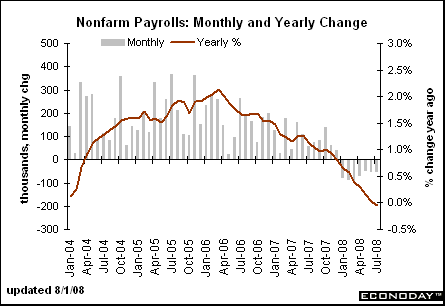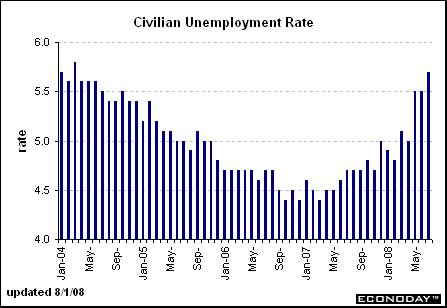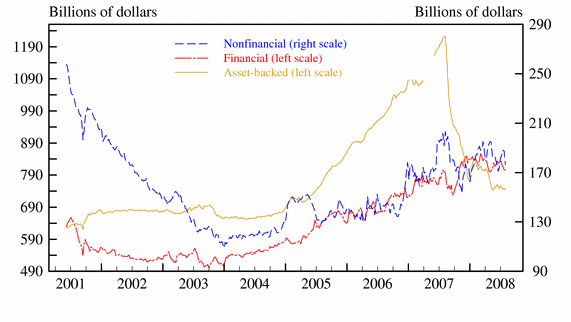Economic activity expanded in the second quarter, partly reflecting growth in consumer spending and exports. However, labor markets have softened further and financial markets remain under considerable stress. Tight credit conditions, the ongoing housing contraction, and elevated energy prices are likely to weigh on economic growth over the next few quarters. Over time, the substantial easing of monetary policy, combined with ongoing measures to foster market liquidity, should help to promote moderate economic growth.
Inflation has been high, spurred by the earlier increases in the prices of energy and some other commodities, and some indicators of inflation expectations have been elevated. The Committee expects inflation to moderate later this year and next year, but the inflation outlook remains highly uncertain.
Although downside risks to growth remain, the upside risks to inflation are also of significant concern to the Committee. The Committee will continue to monitor economic and financial developments and will act as needed to promote sustainable economic growth and price stability.
Let's take this one piece at a time.
Economic activity expanded in the second quarter, partly reflecting growth in consumer spending and exports.
From the BEA:
Real gross domestic product -- the output of goods and services produced by labor and property located in the United States -- increased at an annual rate of 1.9 percent in the second quarter of 2008 (that is, from the first quarter to the second quarter), according to advance estimates released by the Bureau of Economic Analysis. In the first quarter, real GDP increased 0.9 percent
So the economy limped along in the second quarter. Without the impact of the stimulus checks, the economy would have increased about 1.5%. So it's not great but not terrible.
However:
Real disposable income decreased 2.6 percent in June, in contrast to an increase of 5.2 percent in May. Real PCE decreased 0.2 percent, in contrast to an increase of 0.3 percent.
Real -- inflation adjusted -- spending decreased in June despite the impact of the stimulus checks. That does not bode well for the future. It indicates that even with a huge influx of money, consumers are pulling back from spending any money.
The Fed continued by noting:
However, labor markets have softened further and financial markets remain under considerable stress.
Year-over-year job losses continue:

And the unemployment rate is continuing to increase:

At the same time, the amount of asset-backed paper being issued is dropping, and

Short-term rates are still high.

Also note LIBOR is still above the Fed Funds rate, indicating a lack of liquidity.
The Fed continued:
Tight credit conditions, the ongoing housing contraction, and elevated energy prices are likely to weigh on economic growth over the next few quarters.
For tight credit conditions, see above.
Housing is nowhere bottom. The Case Shiller home price index is still dropping at record year over year rates. This indicates the market is nowhere near equilibrium.
The Fed continued:
elevated energy prices are likely to weigh on economic growth over the next few quarters
These is good news on this front. As noted in today's CRB post, commodity prices are starting to drop. Energy prices are included in this price drop. Should this continue, then a major pressure on the economy will be off. While we're not out of the woods yet, we're better off than we were a a few months ago.
The Fed continued:
Inflation has been high, spurred by the earlier increases in the prices of energy and some other commodities, and some indicators of inflation expectations have been elevated. The Committee expects inflation to moderate later this year and next year, but the inflation outlook remains highly uncertain
See today's post on the CRB. There may be good news on the inflation front over the next 12-18 months.
The Fed continued:
Although downside risks to growth remain, the upside risks to inflation are also of significant concern to the Committee. The Committee will continue to monitor economic and financial developments and will act as needed to promote sustainable economic growth and price stability.
In other words, the Fed isn't doing anything. There are still downside economic risks and upside inflationary risks. This is the equivalent of the economic perfect storm. The Fed is still between a rock and a hard place.